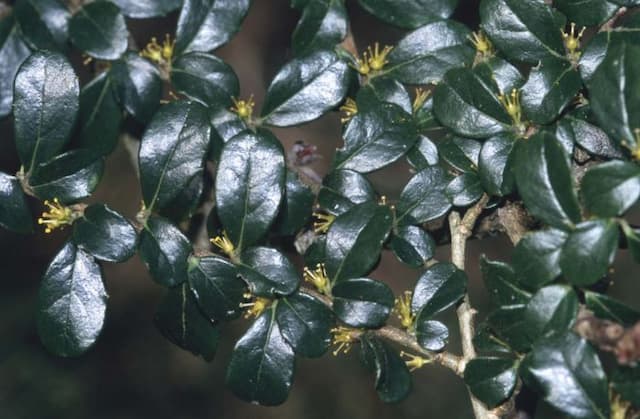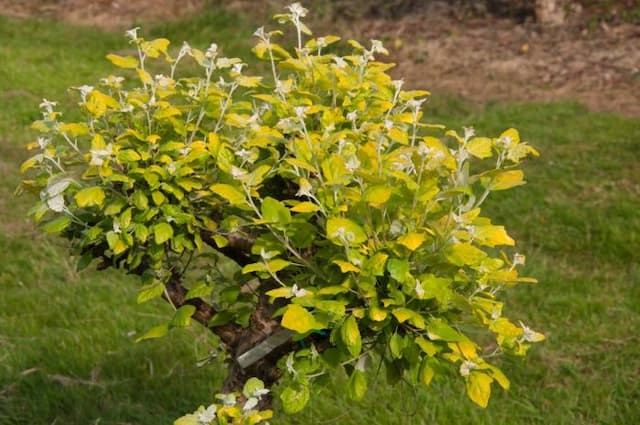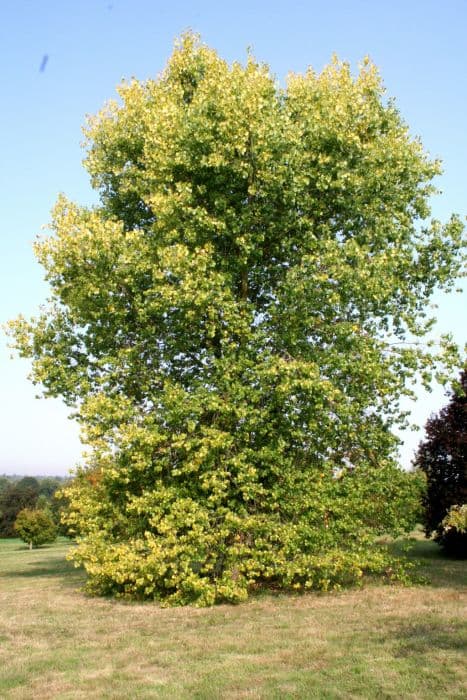Dragon's Claw Willow Salix babylonica var. pekinensis 'Tortuosa' (f)

ABOUT
The plant commonly known as the "Tortured Willow" or "Dragon's Claw Willow" is an intriguing and unusual ornamental tree. Its most distinctive characteristic is the twisting and contorted nature of its branches and trunk, which give it a dramatic and somewhat otherworldly presence. Unlike the straight and weeping branches of its close relatives, the Tortured Willow's branches curl and twist in various directions, creating a unique and eye-catching pattern. The tree is adorned with narrow, lance-shaped leaves that have a light to bright green color and may turn yellow in the fall, adding seasonal interest. In spring, it also produces catkins, or flowering clusters, that add a soft texture before the leaves fully emerge. The tree's bark might be deeply furrowed and adds to the overall twisted appearance of the tree.
About this plant
 Names
NamesFamily
Salicaceae.
Synonyms
Peking Willow, Tortured Willow, Dragon's Claw Willow, Curly Willow, Globe Willow, Hankow Willow.
Common names
Salix matsudana 'Tortuosa'.
 Toxicity
ToxicityTo humans
The plant known as the corkscrew willow is not commonly regarded as toxic to humans. However, as with many plants, sensitive individuals may experience mild stomach upset or allergic reactions if any part of this plant is ingested. It is always wise to avoid eating parts of ornamental plants due to potential individual sensitivities and the absence of information on edibility and toxicity for most of these species.
To pets
Corkscrew willow is also not known to be toxic to pets. Similar to humans, pets may experience mild digestive upset if they consume parts of the plant, particularly if they are not used to eating it. Monitoring your pet for any signs of distress after ingestion is a good precaution, and consult a veterinarian if any worrisome symptoms arise.
 Characteristics
CharacteristicsLife cycle
Perennials
Foliage type
Deciduous
Color of leaves
Green
Height
15-20 feet (4.5-6 meters)
Spread
15-20 feet (4.5-6 meters)
Plant type
Tree
Hardiness zones
5-8
Native area
Asia
Benefits
 General Benefits
General Benefits- Ornamental Interest: Salix babylonica var. pekinensis 'Tortuosa', commonly known as the Peking willow, is prized for its distinctive twisted and contorted branches, which add unique visual interest to gardens and landscapes.
- Shade Provider: With its broad canopy, the Peking willow offers ample shade during hot summers, making it a valuable addition to parks, gardens, and other outdoor recreational areas.
- Erosion Control: The extensive root system of the Peking willow helps stabilize soil and prevent erosion along riverbanks and slopes.
- Adaptability: This willow species is known for its ability to thrive in a variety of soil types, including wet and poorly-drained soils.
- Wildlife Habitat: The tree provides shelter and nesting sites for various bird species, while its catkins are a source of pollen for bees and other pollinators in early spring.
- Fast Growth: Peking willow trees grow quickly, which allows for rapid establishment and development in landscaping projects.
- Windbreak: When planted in rows, Peking willows can act as effective windbreaks that protect crops, buildings, and livestock from strong winds.
- Seasonal Interest: Alongside its unique branch structure, the Peking willow also offers seasonal interest with its lush green leaves in summer and golden-yellow foliage in the fall.
- Streambank Stabilization: Due to its affinity for water, the Peking willow is often used in riparian plantings to help stabilize streambanks and reduce sediment runoff.
- Noise Reduction: The dense canopy of the Peking willow can help dampen traffic noise when planted along roadsides or in urban settings.
 Medical Properties
Medical Properties- This plant is not used for medical purposes.
 Air-purifying Qualities
Air-purifying QualitiesThis plant is not specifically known for air purifying qualities.
 Other Uses
Other Uses- Dragon's Claw Willow can be utilized as a natural fencing material when intertwined to create living fences or screens for privacy.
- The twisted branches of Dragon's Claw Willow are often used in floral arrangements and decorative displays because of their unique shape.
- Dragon's Claw Willow branches can be used to construct whimsical garden structures like arbors or trellises.
- In bonsai, the distinctive tortuous form of the Dragon's Claw Willow makes it a fascinating subject for the art of miniature tree cultivation.
- The wood of Dragon's Claw Willow is sometimes carved into small decorative items or used in woodworking projects due to its interesting grain patterns.
- Photographers and artists may use Dragon's Claw Willow as a compelling subject for their work because of its unique and twisted branches.
- Dragon's Claw Willow can be used in erosion control efforts, particularly on riverbanks, due to its fast growth and extensive root system.
- The tree can serve as a natural windbreak, protecting smaller plants and reducing wind erosion in gardens.
- Dragon's Claw Willow can be planted to provide habitat and food for wildlife, such as birds and insects, which are attracted to its leaves and catkins.
- The branches of Dragon's Claw Willow are sometimes crafted into rustic walking sticks or canes by hobbyists and craftsmen.
Interesting Facts
 Feng Shui
Feng ShuiThe Corkscrew Willow is not used in Feng Shui practice.
 Zodiac Sign Compitability
Zodiac Sign CompitabilityThe Corkscrew Willow is not used in astrology practice.
 Plant Symbolism
Plant Symbolism- Weeping Form: Often referred to as the "Weeping Willow," its drooping branch structure symbolizes sorrow or mourning, frequently used in art and literature to depict scenes of loss or grief.
- Flexibility and Resilience: The willow’s ability to bend without breaking lends it as a symbol of flexibility and resilience in the face of challenges.
- Healing: Throughout history, willow bark has been used medicinally to relieve pain and fever, making the tree represent healing and the use of knowledge to aid others.
- Growth and Fertility: With its vigorous growth and strong root system, the willow is often linked with fertility and the idea of new beginnings.
- Imagination and Inspiration: The willow's unique twisted branches of the 'Tortuosa' variety can evoke creativity, making it associated with the flowing nature of imagination and artistic inspiration.
 Water
WaterThe Dragon’s Claw Willow should be watered deeply to ensure moisture reaches the roots, ideally providing about 1 to 1.5 gallons per week depending on weather conditions. During the growing season in spring and summer, water the tree once or twice a week, while in the cooler fall and winter months, reduce the frequency to once every two weeks or less, depending on rainfall. Always check the soil moisture before watering; the soil should be moist but not waterlogged. In extremely hot weather or if the tree is planted in a particularly dry area, increase the frequency of watering. Take care not to over-water, as this can cause root rot.
 Light
LightThe Dragon’s Claw Willow thrives in full sun exposure, meaning it should receive at least 6 hours of direct sunlight daily. Plant it in a spot where it can get unobstructed sunlight for most of the day. However, the tree can tolerate some light shade, especially in the afternoon in regions with very intense sunlight.
 Temperature
TemperatureThe Dragon’s Claw Willow is adaptable to a wide range of temperatures and can survive in USDA hardiness zones 5 through 8. It can withstand minimum winter temperatures down to -20 to -10 degrees Fahrenheit and is heat-tolerant up to around 90 degrees Fahrenheit. The ideal temperature conditions for the tree are between 50 and 80 degrees Fahrenheit for optimal growth.
 Pruning
PruningPrune the Dragon’s Claw Willow to maintain its distinctive twisted form and health. Remove any dead, diseased, or damaged branches in late winter or early spring when the tree is still dormant. Light pruning can be done any time during the year to shape the tree or control its size. It is best to prune minimally to retain the natural contorted shape, and avoid extensive pruning which can stimulate excess growth.
 Cleaning
CleaningAs needed
 Soil
SoilFor the Corkscrew Willow, a well-draining soil mixture is crucial. Equal parts loam, sand, and peat works well to maintain moisture without waterlogging. A slightly acidic to neutral pH between 6.0 and 7.5 is ideal for this willow variety.
 Repotting
RepottingCorkscrew Willow trees are typically garden or landscape plants and do not need regular repotting. If grown in a container, repot every 2-3 years in spring to prevent root-bound conditions and refresh the soil.
 Humidity & Misting
Humidity & MistingThe Corkscrew Willow prefers moderate to high humidity environments. While specific humidity levels are not critical, avoiding very dry air is important for this moisture-loving species.
 Suitable locations
Suitable locationsIndoor
Ensure ample light, big pot for the root system, and regular watering.
Outdoor
Provide full sun, ample water, and protect from strong winds.
Hardiness zone
4-8 USDA
 Life cycle
Life cycleSalix babylonica var. pekinensis 'Tortuosa', commonly known as the Peking willow or Curly Willow, begins its life cycle with seed germination, usually occurring in the spring when soil moisture levels are high. After germination, the seedling quickly develops a root system and shoots, entering the sapling stage where it starts photosynthesizing to fuel its rapid growth. As a fast-growing tree, it transitions from sapling to a young tree in just a few years, during which time it also starts to develop its characteristic twisted and contorted branches. This species reaches full maturity within 10 to 15 years, and it’s at this mature stage that it reaches its reproductive peak, flowering and producing seeds which are typically dispersed by wind or water. The Peking willow has a lifespan of approximately 30 to 40 years, during which time it continuously goes through cycles of flowering and seed production before eventually declining in vigor and potentially succumbing to environmental stressors or diseases. Post maturity, an older Peking willow may undergo phases of reduced growth and eventual senescence, leading to its death and the return of its nutrients back to the ecosystem through the process of decomposition.
 Propogation
PropogationPropogation time
Late Winter to Early Spring
Salix babylonica var. pekinensis 'Tortuosa', commonly known as the Corkscrew Willow, can best be propagated through hardwood cuttings. The optimum time for taking hardwood cuttings is during the plant's dormancy in late fall to winter. To propagate, select a healthy branch that is about the thickness of a pencil and cut a 10 to 20 inches (25 to 50 centimeters) section. Make the cut just below a node, because this is where the rooting hormone is most concentrated and where roots and shoots are most likely to develop. The bottom cut should be at an angle to increase the surface area available for rooting and to make it identifiable as the bottom. After the cutting is taken, it should be placed directly into moist soil or a water container to encourage root development. Roots will typically start forming within several weeks, after which the cutting can be planted in its desired location.









